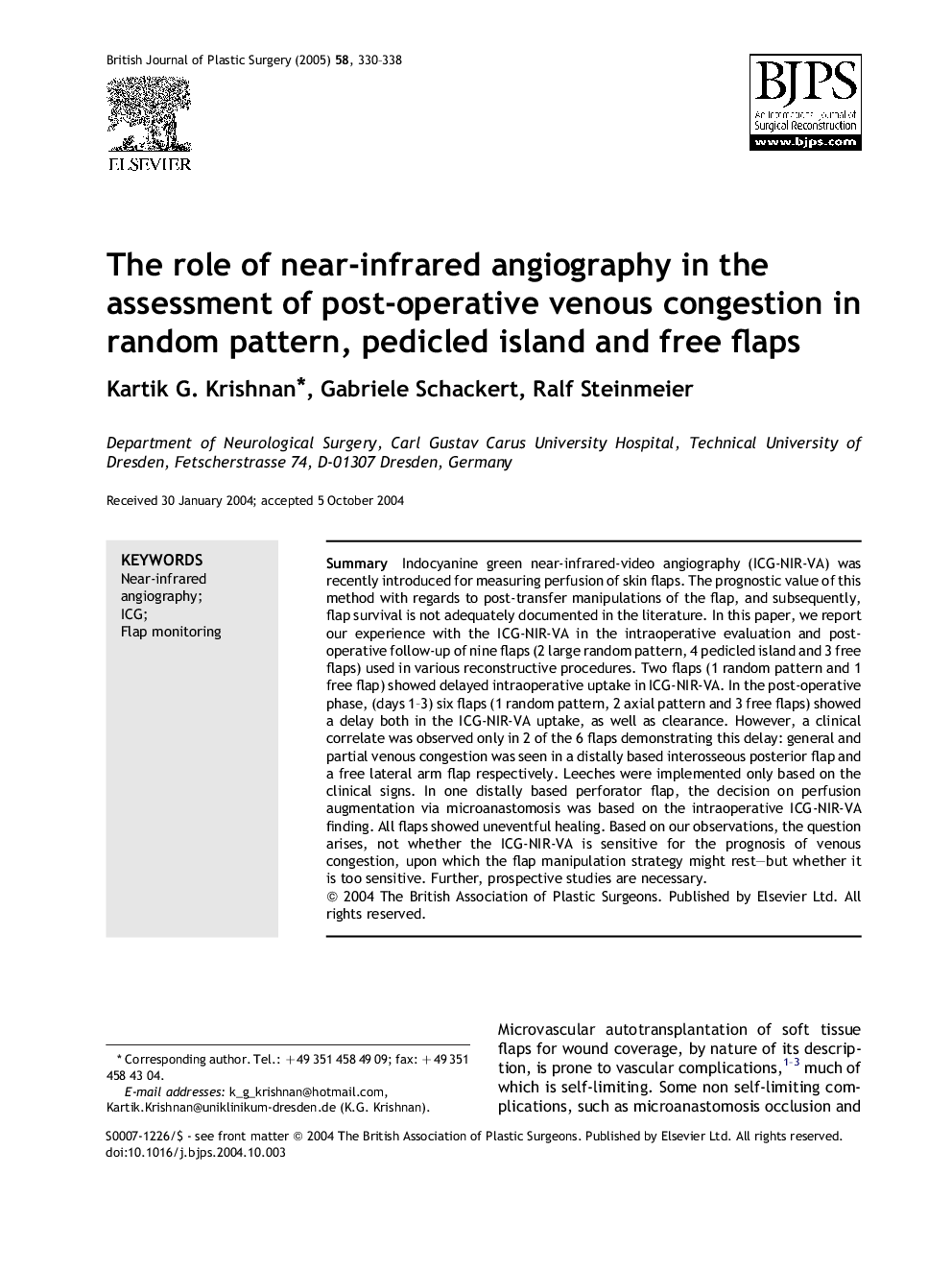| Article ID | Journal | Published Year | Pages | File Type |
|---|---|---|---|---|
| 10087156 | British Journal of Plastic Surgery | 2005 | 9 Pages |
Abstract
Indocyanine green near-infrared-video angiography (ICG-NIR-VA) was recently introduced for measuring perfusion of skin flaps. The prognostic value of this method with regards to post-transfer manipulations of the flap, and subsequently, flap survival is not adequately documented in the literature. In this paper, we report our experience with the ICG-NIR-VA in the intraoperative evaluation and post-operative follow-up of nine flaps (2 large random pattern, 4 pedicled island and 3 free flaps) used in various reconstructive procedures. Two flaps (1 random pattern and 1 free flap) showed delayed intraoperative uptake in ICG-NIR-VA. In the post-operative phase, (days 1-3) six flaps (1 random pattern, 2 axial pattern and 3 free flaps) showed a delay both in the ICG-NIR-VA uptake, as well as clearance. However, a clinical correlate was observed only in 2 of the 6 flaps demonstrating this delay: general and partial venous congestion was seen in a distally based interosseous posterior flap and a free lateral arm flap respectively. Leeches were implemented only based on the clinical signs. In one distally based perforator flap, the decision on perfusion augmentation via microanastomosis was based on the intraoperative ICG-NIR-VA finding. All flaps showed uneventful healing. Based on our observations, the question arises, not whether the ICG-NIR-VA is sensitive for the prognosis of venous congestion, upon which the flap manipulation strategy might rest-but whether it is too sensitive. Further, prospective studies are necessary.
Keywords
Related Topics
Health Sciences
Medicine and Dentistry
Otorhinolaryngology and Facial Plastic Surgery
Authors
Kartik G. Krishnan, Gabriele Schackert, Ralf Steinmeier,
